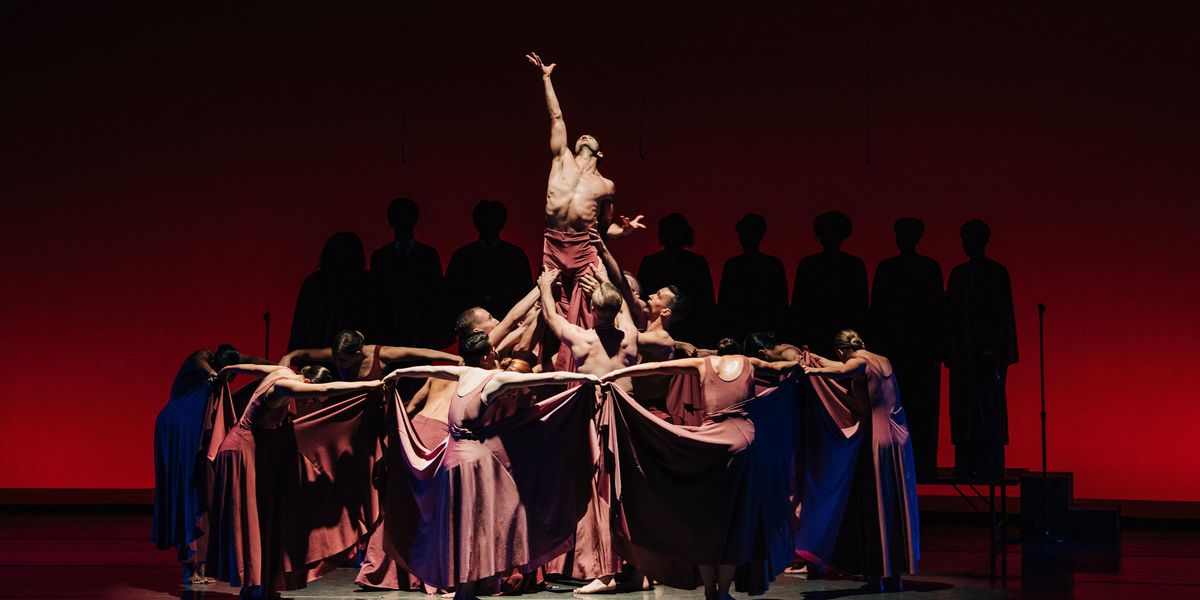How Accessing Your Backspace Can Make You a More 3-D Dancer
Dancers, like all people, are naturally frontal beings. Yet they’re constantly being tasked with moving backwards, and asked to sense what’s behind them to keep from trampling set pieces or their colleagues.
Learning to activate your backspace can not only help you become a more three-dimensional dancer, but can make you more confident and fearless no matter what type of movement is thrown your way. “The backspace is really a source of untapped energy,” says Pamela Pietro, a professor at New York University’s Tisch School of the Arts. “It just takes time to understand and find.”
Spirals and Circles
“Backspace” means something slightly different to every dancer. But thinking beyond the muscles of your back to what’s behind you requires a conceptual understanding of both your kinesphere and the systems of spirals within the body.
“We’re these three-dimensional beings and not these flexion-and-extension beings only,” says Pietro. “But what we sometimes fail to understand is that there’s an entire circular pattern that’s going on. Part of that is backspace, but it’s also spiraling.” A former assistant to dance anatomy guru Irene Dowd, Pietro believes that an understanding of the spirals in the body can lead to more possibilities for directionality.
Zachary Heller, a longtime member of Giordano Dance Chicago and a jazz teacher, encourages his students to think of their torsos as an old-fashioned barber’s pole, spiraling to create more textured movement. “That idea of wrapping starts to engage the whole torso,” he says. In a technique based on contraction and curvature, opposition between the back and the core are key, and leads to both more engaged back muscles and a greater awareness of the backspace.
Anatomy, Anatomy, Anatomy
Sheyi Ojofeitimi, a physical therapist who works with Alvin Ailey American Dance Theater, says understanding backspace starts by training the pathways between the mind and the body. When working with Ailey dancers, she uses a computerized anatomy program to show them how the complex muscles of their backs and shoulders come together. “I need them to get to the point where they’re visualizing where things are when they move,” she says, noting that a deep understanding gives dancers the freedom they crave. “It’s like a dark room—you’re less willing to go explore if no one’s ever shined a light in there. Once you know what’s in there, you’ll be like ‘I can’t see, but I know.’ ”

Photo courtesy Ojofeitimi
Moving on Back
Creating new connections between your brain and your body leads to an enhanced sense of proprioception, a vital tool in building awareness of your backspace. One way Ojofeitimi works to enhance these pathways is by simply having dancers move backwards. She starts them walking, and then running, backwards on a treadmill. “At first they’re holding on, going one step at a time, but after a week they can stride backwards while talking.” Ojofeitimi also encourages dancers to challenge their brains by reversing basic actions throughout their days. An easy place to start is just walking backwards alongside the length of your couch, and then turning around and walking backwards the other way.
Use the Backs of the Legs
When Pietro first instructs her students to move backwards, either across the floor or in improvisation, she finds that their tendency is to lead with their butts. To get them to break that habit, she encourages them to imagine that their feet have eyes and are leading the way. “When they’re moving into their backspace, they’re actually reaching with their toes,” she says. Pietro also asks them to return to an awareness of their hamstrings and glutes, which she builds through somatic-pathway exercises at the beginning of class, such as lying in a sphinx pose and doing simple leg lifts. “It helps students realize the directionality of where their legs are going,” says Pietro.

Lei Shi, courtesy Pietro
Eyes Closed
Another key exercise in developing new neuropathways is moving with your eyes closed. Dancers can get so stuck on needing to see where they’re going that they lose awareness of what’s behind them. Pietro frequently gives her students improvisational prompts asking them to move into their backspace with their eyes closed. Ojofeitimi also uses this technique in her physical therapy practice, having dancers practice exercises with their eyes open and then closed. “It’s trying to test the ability of the proprioceptors in that area to kick in,” she adds.
Don’t Forget Spatial Awareness
Dancers are often told they’re not moving big enough, and some of that can stem from fear of hitting what’s around you. For Heller, it’s not only about understanding his backspace, but knowing everything that’s going on around him onstage. He recommends learning other dancers’ parts, to understand how all the pieces fit together. “I see my own track and the map of everyone’s track,” he says. “Then you can also see things in terms of spatial awareness, using your peripherals.”

Gorman Cook, courtesy Giordano Dance Chicago
Strive for Boundlessness
When watching dancers in performance, Pietro says she can instantly see if they’re embodying their backspace. “If you have an idea of your backspace as the thing that’s propelling you, there’s an energy going from the back to the front. Their movement completely changes, and becomes fuller and richer,” she says. In her own practice, Pietro believes that confidence plays a critical role in accessing her backspace. “It feels like being in a space with no walls. There’s no front or back or side, but it’s my understanding of my body inside of a space inside of movement. And it feels boundless.”
Teachers: Want to help your students become more 3-D dancers? Visit dance-teacher.com for more tips.





